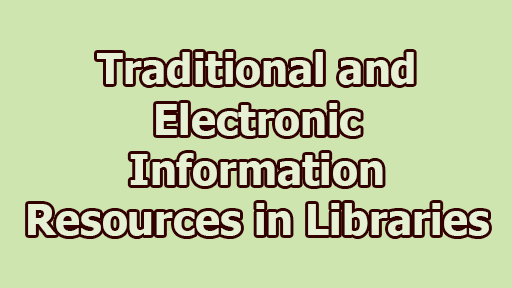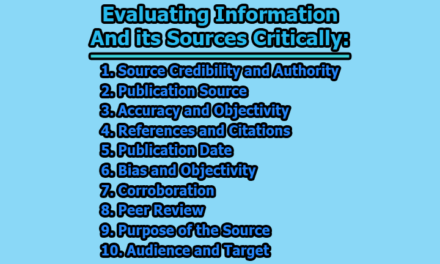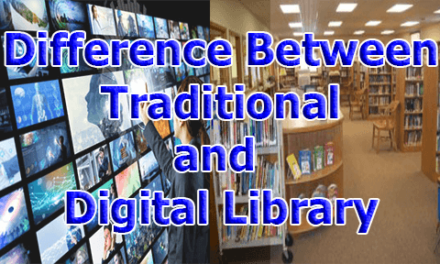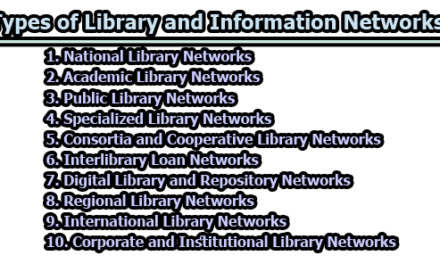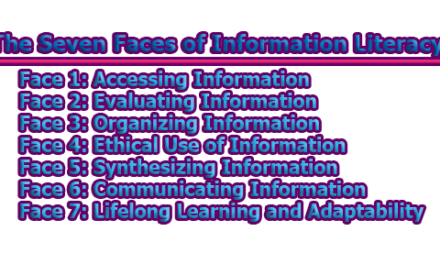Traditional and Electronic Information Resources in Libraries:
Libraries are a crucial source of information for research, learning, and personal growth. Traditionally, libraries have relied on print materials, such as books and journals, as their primary sources of information. However, with the advent of technology, libraries have expanded their collections to include electronic information resources, such as e-books, online journals, and databases. In this article, we will discuss the traditional and electronic information resources in libraries.
Traditional Information Resources:
1. Books: Books are the most common and essential resource in libraries. Libraries typically have collections of books on various subjects, from academic to non-academic topics, and in various formats, including hardcover, paperback, and reference books. Books are often classified using the Dewey Decimal Classification System, making them easy to find.
2. Journals: Journals are academic or professional publications that contain articles written by experts in a particular field. They are essential resources for research and learning, providing up-to-date information on a particular subject. Libraries often subscribe to print journals, which are typically shelved in the reference section.
3. Reference Materials: Reference materials are books and other resources that are consulted for quick access to information. These include dictionaries, encyclopedias, atlases, and directories. They are typically shelved in the reference section of the library and are often not available for loan.
4. Newspapers: Newspapers are a primary source of current events and news. Libraries typically subscribe to local and national newspapers, which are available for reading in the library.
5. Magazines: Magazines are similar to journals but are more commonly associated with popular culture and general interest topics. Libraries may subscribe to magazines in various fields, such as fashion, cooking, sports, and technology.
6. Rare and Special Collections: Some libraries may have rare and special collections, which include books, manuscripts, maps, and other materials that are valuable or unique. These collections may be accessible to users but often have specific rules and restrictions regarding their use.
7. Audiovisual Materials: Libraries may also have audiovisual materials, such as CDs, DVDs, and Blu-rays, that provide information and entertainment to users. These materials may include documentaries, instructional videos, and feature films.
8. Microforms: Microforms are miniature reproductions of print materials that are typically used for archival purposes. They include microfilm, microfiche, and microcard. Microforms may be used to access rare or out-of-print materials, and they are typically viewed using a microform reader.
9. Maps: Libraries may also have collections of maps, atlases, and gazetteers that provide geographic information on various regions and locations.
10. Theses and Dissertations: Many academic libraries collect and preserve theses and dissertations, which are written by graduate students as part of their academic requirements. These materials may be valuable sources of research for users in a particular field.
Electronic Information Resources:
1. E-Books: E-books are digital versions of printed books that can be read on electronic devices such as e-readers, tablets, or smartphones. Libraries have begun to offer e-books as an alternative to print books, making them more accessible to patrons. E-books can be accessed online, and users can borrow them for a limited period, just like print books.
2. Online Journals: Online journals are digital versions of print journals. Libraries subscribe to online journals, making them accessible to their patrons. Online journals are usually accessed through library databases, and users can search for articles by keyword or subject.
3. Databases: Databases are electronic resources that provide access to a wide range of information sources, such as journal articles, newspapers, magazines, and e-books. Libraries often subscribe to databases on specific subjects, such as science, law, or history. Users can search for information in databases using keywords or subject headings.
4. Reference Sources: Electronic reference sources are digital versions of print reference materials, including dictionaries, encyclopedias, and atlases. These resources are available through online platforms and can be accessed from anywhere with an internet connection.
5. Audio and Video Resources: Libraries also provide access to audio and video resources, including podcasts, webinars, online courses, and streaming video services. These resources provide users with access to instructional and educational content on various subjects.
6. Open Access Resources: Open access resources are digital materials that are available for free to anyone with an internet connection. These resources include scholarly articles, books, and other resources that have been made available by their creators. Examples of open-access resources include the Directory of Open-Access Journals and the Public Library of Science.
7. Institutional Repositories: Institutional repositories are digital collections of academic and scholarly works that are created and maintained by academic institutions. These repositories provide access to the works of faculty, researchers, and students affiliated with the institution.
8. Websites and Online Portals: Libraries also provide access to websites and online portals that provide information on various subjects. Examples include news websites, government websites, and online encyclopedias such as Wikipedia.
In conclusion, libraries provide access to both traditional and electronic information resources. Traditional resources include books, journals, reference materials, and newspapers, while electronic resources include e-books, online journals, databases, and websites. The availability of both traditional and electronic resources makes libraries a vital source of information for research, learning, and personal growth.

Library Lecturer at Nurul Amin Degree College

